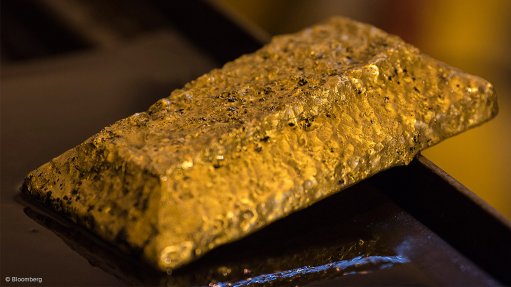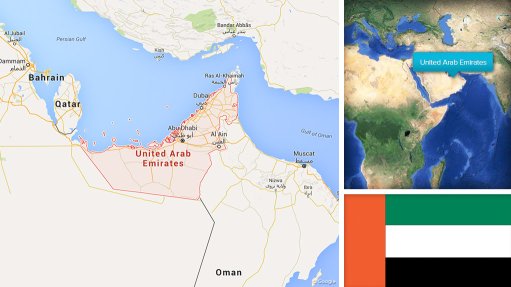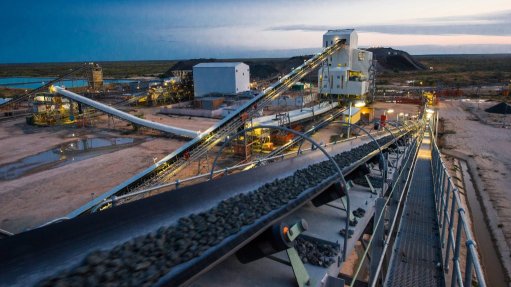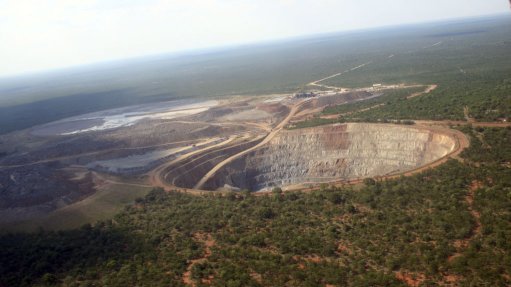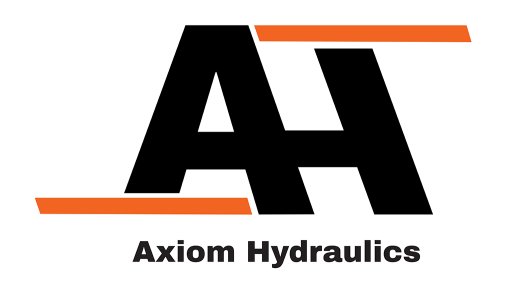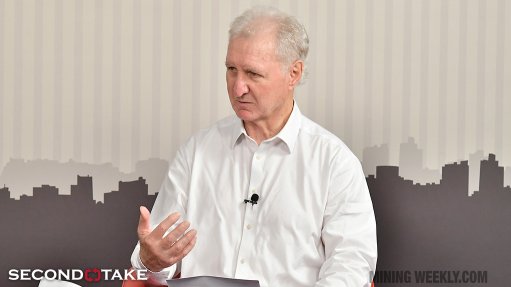Elandsfontein mine to assist in alleviating West Coast water challenges

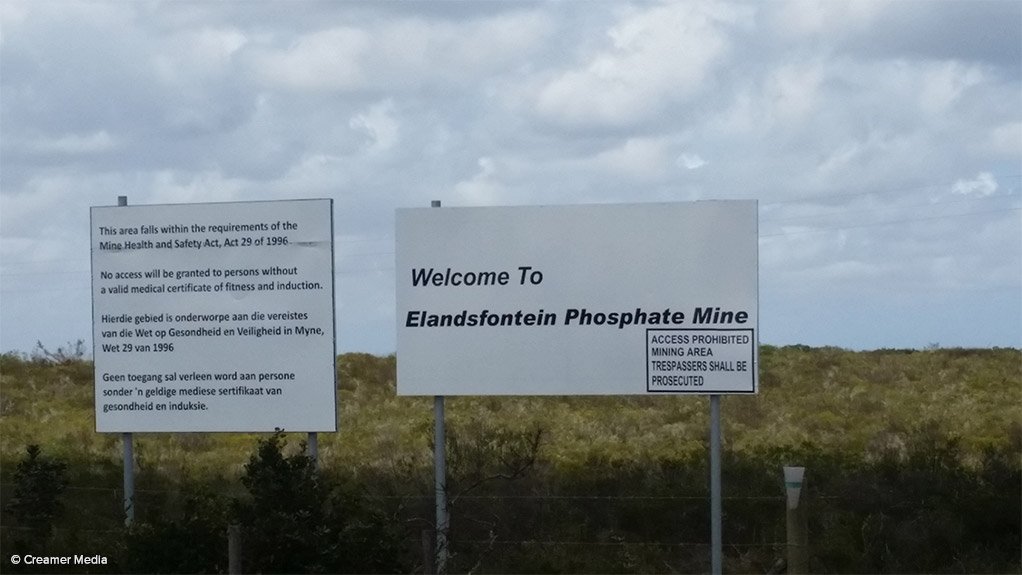
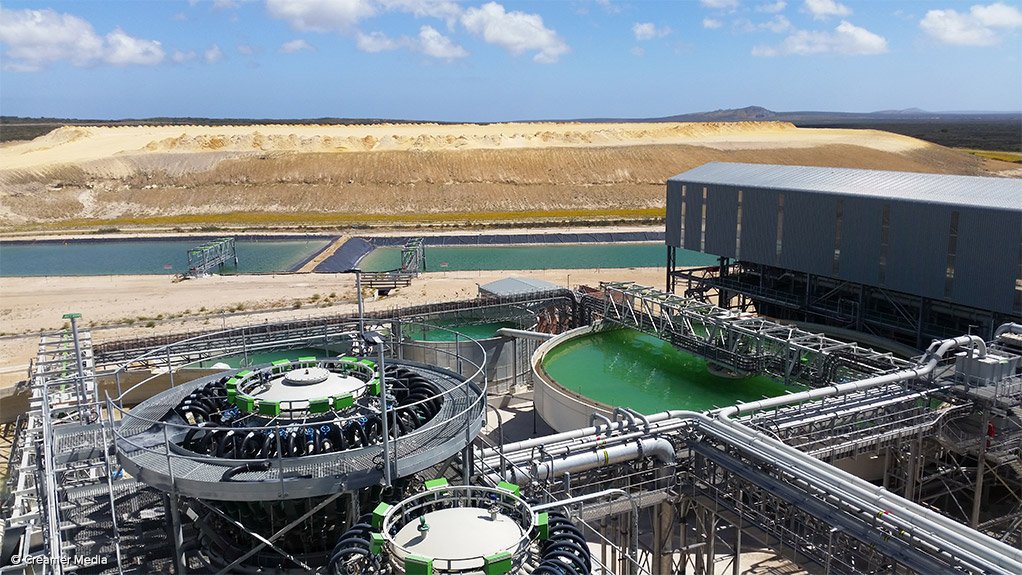
SEEKING TO BE MISERLY Kropz has revised down its water-use requirements to 1.6 megalitres a day and it is the company’s intention to further revise this down to 1 meglitres a day
Photo by Creamer Media image
CREATIVE SOLUTIONS To ensure that the mine has sufficient water supply, Kropz has reached an agreement with the municipality to make use of effluent water from wastewater treatment plants
Photo by Creamer Media image
Emerging miner Kropz’s Elandsfontein phosphate mine, near Saldanha Bay, in the Western Cape, plans to supply the drought stricken West Coast region with additional clean water, while offsetting its own water use over the course of the next three years.
The project is located on land adjacent to the West Coast National Park, the Dunefield Heritage Site and 15 km from the Langebaan lagoon.
The Saldanha Bay municipality (SBM) has Level 4 water restrictions in place, which came into effect in September. In accordance with these restrictions, all domestic water users are required to use less water and must not exceed a maximum of 100 ℓ/d per person.
Kropz technical director Michelle Lawrence told Mining Weekly during a visit to the project last month that Kropz had initially applied to use 2.4 Mℓ/d of water from the SBM for the mine.
This was subsequently reduced to 1.6 Mℓ/d and it is the company’s intention to further slash this to 1 Mℓ/d.
However, Lawrence notes that, currently, as the mine is on care and maintenance, no municipal water is being used for operational purposes, other than for human consumption.
The mine only has a three-year water-use agreement with the SBM, although it has a scheduled life span of 15 years.
Lawrence remarked that, to ensure that the mine has sufficient water supply, Kropz has reached an agreement with the municipality to make use of effluent water that flows out of the wastewater treatment plants at Vredenburg.
“There is 2.4 Mℓ/d of wastewater effluent flowing out of the Vredenburg plant,” she pointed out.
The mine company has agreed to take all the effluent water and treat it to a level where it can be reintroduced into the local water system or used by other industrial users in the area to offset the mine’s water-use.
“Either way, in the long term, this would create a net water gain to the system of about 1.4 Mℓ/d,” Lawrence pointed out.
Kropz legal and compliance manager Dr Martin Carstens told Mining Weekly that, on October 12, he attended a water crisis meeting with the SBM, along with other industry stakeholders, to discuss the current water challenges facing the region.
“Representatives from the fishing industry warned participants at the meeting that, if they were not assured of water supply, they would be forced to close their operations and potentially lay off thousands of workers,” he stated.
Lawrence said that Kropz was in discussions with steel producer ArcelorMittal Saldanha Steel and heavy minerals mining company Tronox about building a pipeline to supply them with treated effluent water to offset their use of potable water in their operations.
She explained that a portion of the project’s phosphate and overburden lay within the property’s underground water, known as the Elandsfontein aquifer. There is a lower and upper aquifer, separated by a 30-m-thick clay layer.
The mine has no impact on the lower aquifer. Therefore, she noted: “All the concerns raised about the mine’s impact on the aquifer relate only to the upper portion of the aquifer.”
She commented that, in order to dewater the project’s mining area to access the ore and the mine safely, Kropz had established a ring of boreholes around the mining area. The water was pumped out of the mining area, then piped downstream of the mining area and, with the aid of gravity, flowed back into the aquifer through the recharge boreholes.
The boreholes comprise a system of pipes that ascend to ground level, where the water flows more freely and is fed back into the aquifer and then into the Langebaan lagoon. “This ensures that there is no impact on water quality or volume, as it is a closed reticulation system,” Lawrence stated.
The groundwater that the mine pumps out from the aquifer is delivered to a tank and reinjected back into the aquifer system.
Lawrence said that there was a “small amount” of water that seeped into the mining area, which the mine was allowed to pump and use for mining-related purposes.
Kropz has invested about R6-million on groundwater studies and the development and peer review of the mine’s groundwater model, which has informed the company’s responsible management of the Elandsfontein aquifer’s water.
These studies have been independently reviewed by environmental consultants including SRK Consulting, Geohydrological & Spatial Solutions International and the University of Western Cape Institute for Water Studies’ Dr Jaco Nel.
The model has been handed over to Nel, who has access to master’s students who will be visiting the site to undertake further studies on the aquifer. Nel has also been the consultant to the SBM regarding questions about the impact on the region of using some of the mine’s groundwater for human consumption purposes.
Lawrence noted that these studies found that all groundwater monitoring undertaken since Kropz started the dewatering and recharging of the aquifer seven months back showed these actions “were not having a negative impact on groundwater or the lagoon”.
“All the information that we are receiving from the water pumping and recharge systems that the mine has established are monitored in real time, which enables its water management consultants to continuously update the model,” she said. Lawrence added that extensive downstream monitoring of the aquifer between the mine and the lagoon was also conducted by independent consultants on a monthly basis.
This numerical groundwater model has been developed using a software program called MODFLOW, which is considered an international standard for simulating and predicting groundwater conditions and groundwater interactions.
Lawrence pointed out that Kropz had been in discussions with the Department of Water and Sanitation (DWS) and the Saldanha Bay Water Quality Forum Trust to expand the water monitoring network and the understanding of the regional groundwater flow.
The model extends from the Berg river to the coastline and encompasses the towns of Jacobsbaai and Darling, which make up a large portion of the West Coast region. Lawrence elaborated that the rationale for sharing this model was to ensure that other water users in the area had the model available to understand the impact of their actions. “This ensures the model becomes a collaborative and collective piece of information,” she added.
Meanwhile, the West Coast Environmental Protection Association (WCEPA) has filed an urgent interdict in the Western Cape High Court against Kropz, Water and Sanitation Minister Nomvula Mokonyane and the DWS to have the mine’s water-use licence suspended.
The WCEPA, which is represented by law firm Cullinan & Associates, said it opposed the Elandsfontein development from the outset, owing to the “threat it poses to the ecosystems and livelihoods dependent on the Elandsfontein aquifer and Langebaan lagoon”.
WCEPA treasurer Nicola Viljoen said the WCEPA’s experts pointed out in its appeal to the Water Tribunal that Kropz has not established what the impacts of its ongoing abstraction and reinjection of aquifer water would be, and that there were good reasons for believing that the long-term impacts could be severe.
Cullinan & Associates senior associate Walter Anderson, in a statement, last week, said that the Minister and the DWS director-general had indicated that neither would oppose the WCEPA’s High Court application.
He added that Mokonyane had filed an explanatory affidavit in support of the WCEPA’s application.
The affidavit stated that the Minister was of the opinion that the WCEPA’s appeal to the Water Tribunal was valid and Kropz’s argument that the WCEPA ought to have appealed to the Minister was wrong for a number of reasons, including that the regulations which Kropz had relied on did not apply to the application and that the regulations were inconsistent with the National Water Act in any event, making them invalid.
Article Enquiry
Email Article
Save Article
Feedback
To advertise email advertising@creamermedia.co.za or click here
Press Office
Announcements
What's On
Subscribe to improve your user experience...
Option 1 (equivalent of R125 a month):
Receive a weekly copy of Creamer Media's Engineering News & Mining Weekly magazine
(print copy for those in South Africa and e-magazine for those outside of South Africa)
Receive daily email newsletters
Access to full search results
Access archive of magazine back copies
Access to Projects in Progress
Access to ONE Research Report of your choice in PDF format
Option 2 (equivalent of R375 a month):
All benefits from Option 1
PLUS
Access to Creamer Media's Research Channel Africa for ALL Research Reports, in PDF format, on various industrial and mining sectors
including Electricity; Water; Energy Transition; Hydrogen; Roads, Rail and Ports; Coal; Gold; Platinum; Battery Metals; etc.
Already a subscriber?
Forgotten your password?
Receive weekly copy of Creamer Media's Engineering News & Mining Weekly magazine (print copy for those in South Africa and e-magazine for those outside of South Africa)
➕
Recieve daily email newsletters
➕
Access to full search results
➕
Access archive of magazine back copies
➕
Access to Projects in Progress
➕
Access to ONE Research Report of your choice in PDF format
RESEARCH CHANNEL AFRICA
R4500 (equivalent of R375 a month)
SUBSCRIBEAll benefits from Option 1
➕
Access to Creamer Media's Research Channel Africa for ALL Research Reports on various industrial and mining sectors, in PDF format, including on:
Electricity
➕
Water
➕
Energy Transition
➕
Hydrogen
➕
Roads, Rail and Ports
➕
Coal
➕
Gold
➕
Platinum
➕
Battery Metals
➕
etc.
Receive all benefits from Option 1 or Option 2 delivered to numerous people at your company
➕
Multiple User names and Passwords for simultaneous log-ins
➕
Intranet integration access to all in your organisation








